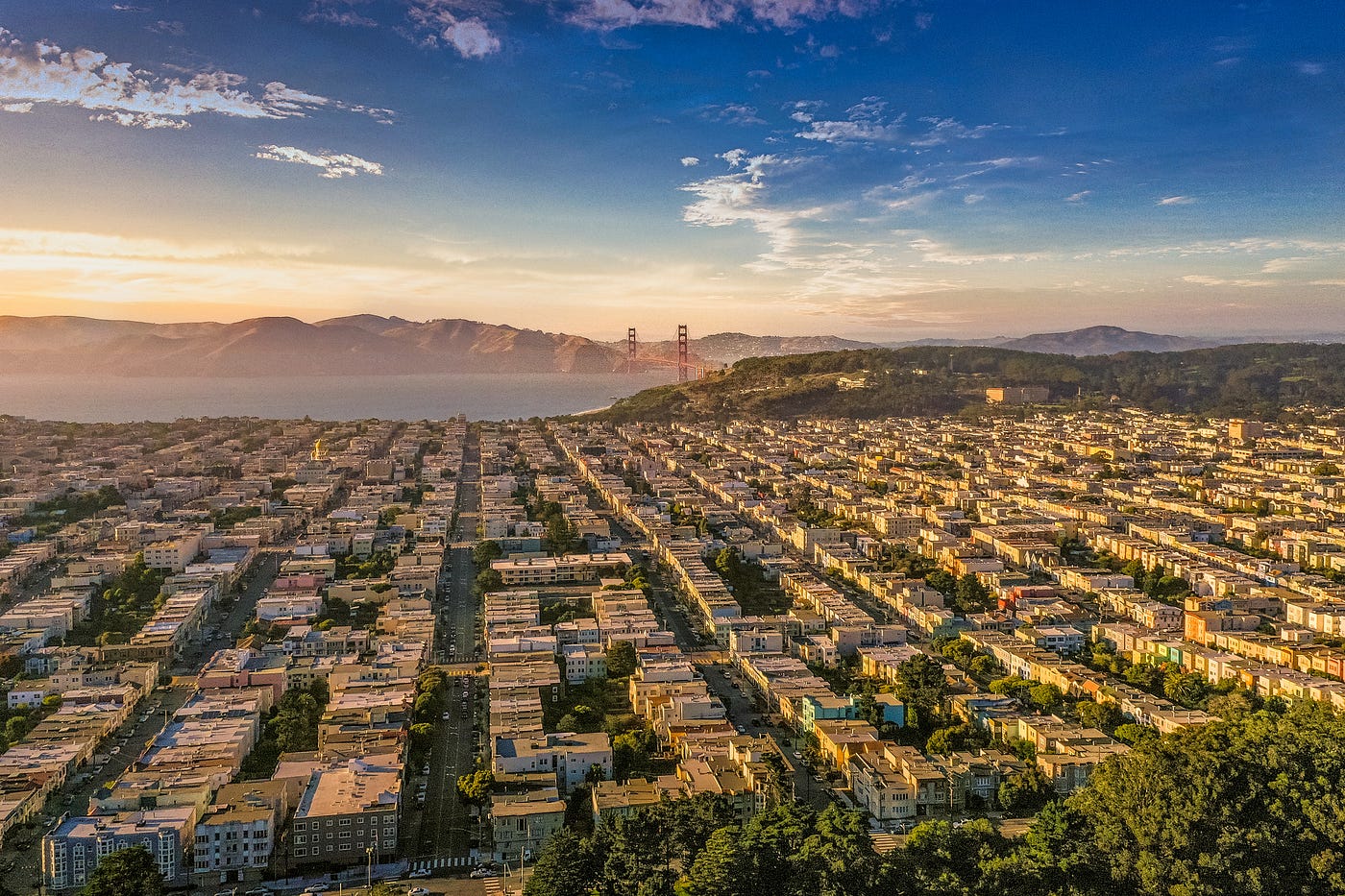
By The Bold Italic’s Editor-in-Cheif, Matt Charnock
San Francisco is a bastion for all things pertaining to environmentalism, conservation, and biophilia. Those among us who call this 49-square-mile city home are blessed to live no more than a seven-minute walk to a City-maintained greenspace. Even our four-legged besties can wag happily knowing that they’re living in the most dog-friendly city in America.
But the climate crisis will continue to alter our daily lives, even here in this unapologetically green metropolis. San Francisco, itself, has warmed by two degrees Fahrenheit over the past 50 years. The city is experiencing less rainfall, on average, than it was just three decades ago. King tides now regularly flood the Embarcadero in unusually severe ways, all while causing damage to piers and seawalls elsewhere in the Bay Area.
The physical world around us is transforming. For the worse. We’re not prepared for it. At all. San Francisco, like every coastal city in the world, is going to get even more fucked up by the climate crisis in the years to come.
Hold on to your butts, babes. It’s, in fact, not going to get better (unless the promised and pontificated change from our local, state, and national leaders is actualized ASAP).
Here are the five most pressing, damaging, dystopian-making ways the climate crisis will affect San Francisco in the coming decades
Sea level rise will swallow up parts of the city
In 2016, TBI’s then-senior editor Andrew Chamming wrote that a 25’ sea rise would effectively wipe out the Embarcadero… as well as Bayview-Hunters Point, the Mission District, and the Marina District. Though that severity of sea-level rise won’t come our way in the near future, the next three decades might see the San Francisco Bay swell by nearly two feet, which could more than triple by the end of the century.
Though there are some sea-level rise mitigation plans in place — many of which focus on mostly redirecting seawater, especially during high tides, to areas less prone to flooding — San Francisco’s landscape will look much different by the end of our lifetimes.
Insect life in SF could never recover
Insects represent a pillar of biodiversity; they exist as a marker for the health of any single ecosystem. But the reality is this: populations of insects are on a global decline. A doomsday mixture of human-caused habitat loss, pesticides, and human-induced climate change is wreaking havoc on insect populations worldwide. In 2019, Biological Conservation reported that 40% of all insect species are seeing their numbers decline because of global warming; a third of them have now become endangered as a result.
Here in San Francisco, this could mean future generations seeing the jaw-droppingly gorgeous Mission blue butterfly and the San Francisco forktail damselfly — one of the rarest insects in the country that’s very existence is predicated on the continued health of Karl The Fog—in the wild
Bye, Karl The Fog
Speaking of Karl The Fog: the climate crisis is, at this current moment in time, expected to erase San Francisco’s iconic, atmospheric haze from our horizons in the next 100 years. A combination of drier air conditions and warming temperatures continue to shrink Karl’s waistline every year. Since the 1970s alone, SF’s low-slung fog that we’ve all come to personify has lost 30% of its initial volume. By as early as 2050, there could very well be the occasional “fog-free” day here in SF — an almost unfathomable anomaly.
Oh, and the disappearance of SF’s fog would also spell disaster for a myriad of local flora and fauna, like the aforenoted damselfly species, that rely on its daily moisture.
More orange skies and terrible air quality
It’s inevitable at this point that Northern California’s incredibly common apocalyptic wildfires will continue on without much (if any) relief. The past few years have seen the skies above San Francisco morph into a Blade Runner-like hellscapes; the state’s first-ever gigafire — a blaze measuring over a million acres in size — destroyed at least 933 structures and damaged thousands of others; air quality readings across the Bay Area glow purple and force residents to outright shelter inside… due to the air on the other side of their front doors being too dangerous to breathe.
The entire Bay Area, as well as most of Northern California, remains in severe drought conditions, according to the U.S. Drought Monitor Map — an ominous sign of likely another demoralizing wildfire season to come later this year.
Alien fauna will (continue to) overtake the San Francisco Bay
Did you know that San Francisco Bay has the highest concentration of introduced invasive species anywhere in the world? Well, it does… and it could collapse the already vulnerable marine ecosystems the bay contains.
Because the San Francisco Bay is expected to warm over the ensuing decades, the over 240 invasive species — most of which came by way of hosting a ride on the underbelly of marine vessels from more tropical waters — will continue to thrive and push out native fauna.
Sign up for The Bold Italic newsletter to get the best of the Bay Area in your inbox every week.







